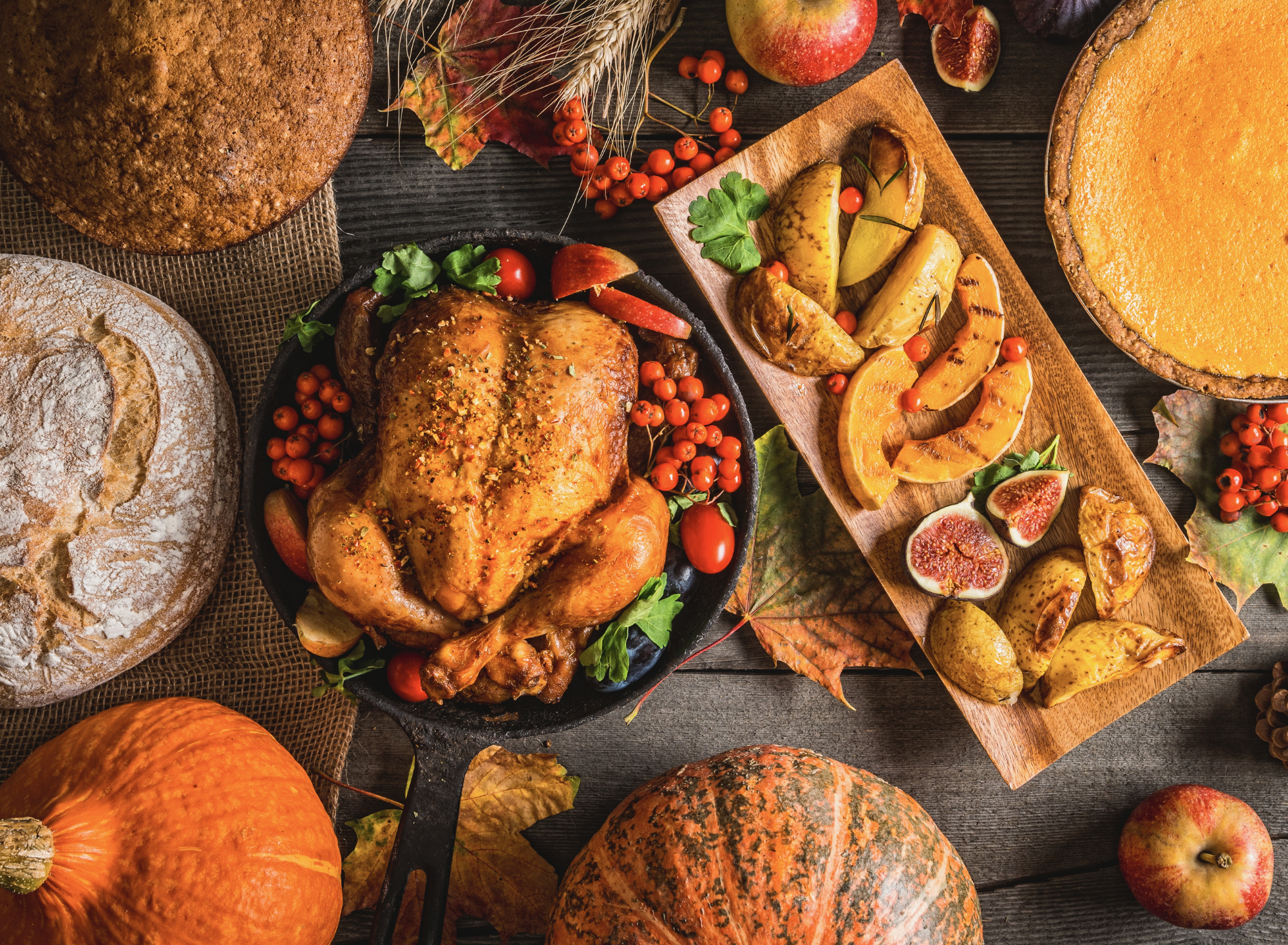Thanksgiving Food Safety: Your Ultimate Guide to a Healthy Holiday Feast
As the holiday season approaches, many of us eagerly anticipate the delicious Thanksgiving feast that awaits. However, it's essential to prioritize food safety to ensure that your celebration is not marred by foodborne illnesses. In this guide, we'll answer some of the most common Thanksgiving food safety questions and explore the reasoning behind each to help you prepare a safe and healthy holiday meal.
1. How long can I safely store Thanksgiving leftovers?
After enjoying your Thanksgiving meal, promptly refrigerate leftovers within 2 hours.
Store leftovers in airtight containers and consume them within 3-4 days.
Bacteria multiply rapidly at temperatures between 40°F (4°C) and 140°F (60°C). Promptly refrigerating leftovers within two hours prevents bacteria from multiplying to dangerous levels. The 3-4 day recommendation ensures that leftovers are consumed before bacteria can pose a significant risk.
2. Is it safe to thaw a turkey on the countertop?
No, it's not safe to thaw a turkey on the countertop. Use one of these safe methods: refrigerator, cold water, or microwave.
Thawing at room temperature allows the outer layers of the turkey to enter the danger zone (40°F to 140°F) where bacteria can thrive. Using safe methods like the refrigerator, cold water, or microwave maintains the turkey's temperature below the danger zone, preventing bacterial growth.
2. Is it safe to thaw a turkey on the countertop?
The recommended internal temperature for turkey is 165°F (74°C). Use a meat thermometer to ensure accuracy.
Cooking turkey to an internal temperature of 165°F (74°C) ensures that harmful bacteria, such as Salmonella and Campylobacter, are killed. This temperature is considered safe by food safety experts.
4. Can I stuff the turkey the night before?
It's best to stuff the turkey just before cooking to prevent bacterial growth. Alternatively, you can prepare the stuffing separately.
Stuffing the turkey the night before can lead to the growth of harmful bacteria in the stuffing if it stays in the temperature danger zone for an extended period. It's safer to stuff the turkey just before cooking to minimize the time bacteria have to multiply.
5. Should I rinse the turkey before cooking?
No, do not rinse the turkey. Rinsing can spread bacteria around your kitchen. Cooking to the proper temperature will kill any bacteria.
Rinsing a turkey can splash potentially harmful bacteria onto kitchen surfaces, increasing the risk of cross-contamination. Cooking the turkey to the recommended temperature of 165°F (74°C) will effectively kill any bacteria, making rinsing unnecessary.
6. How do I safely transport Thanksgiving dishes to a potluck?
Use insulated bags or coolers to keep hot foods hot (above 140°F or 60°C) and cold foods cold (below 40°F or 4°C).
Transport dishes in separate containers to avoid cross-contamination.
To prevent bacterial growth, it's crucial to keep hot foods hot (above 140°F or 60°C) and cold foods cold (below 40°F or 4°C). Using insulated bags or coolers helps maintain safe temperatures during transportation, reducing the risk of foodborne illness.
7. Is it safe to leave food out at room temperature during Thanksgiving dinner?
Keep perishable foods out of the temperature danger zone (40°F to 140°F or 4°C to 60°C) for no longer than 2 hours.
Consider using chafing dishes or slow cookers to keep hot dishes warm.
The temperature danger zone (40°F to 140°F or 4°C to 60°C) is where bacteria multiply rapidly. To avoid foodborne illnesses, it's essential to limit the time perishable foods spend in this temperature range, which is why dishes should not be left out for more than 2 hours.
8. How to reheat Thanksgiving leftovers safely?
Reheat leftovers to 165°F (74°C) to kill any bacteria.
Use a microwave, oven, or stovetop for reheating.
Reheating leftovers to 165°F (74°C) is essential because it kills any bacteria that may have multiplied during storage. This temperature is scientifically proven to be effective in ensuring food safety.
9. Can I refreeze Thanksgiving leftovers?
It's safe to refreeze leftovers if they have been handled and stored correctly. However, the quality may degrade after multiple freeze-thaw cycles.
While refreezing is safe from a bacterial perspective if leftovers have been handled and stored correctly, it may affect the quality of the food. Each freeze-thaw cycle can lead to changes in texture and taste, but it won't compromise the safety of the food.
10. What are some final tips for preventing foodborne illnesses on Thanksgiving?
Wash hands and cooking utensils frequently.
Use separate cutting boards for raw meat and vegetables.
Avoid cross-contamination by keeping raw and cooked foods separate.
Frequent handwashing, using separate cutting boards for raw meat and vegetables, and keeping raw and cooked foods separate are all based on scientific principles to prevent cross-contamination and reduce the risk of foodborne pathogens spreading.
Conclusion
By following these Thanksgiving food safety guidelines, you can enjoy a delicious and worry-free holiday meal with your loved ones. Prioritizing food safety ensures that the only thing you'll be bringing to the table is a joyful and memorable dining experience.
Remember, these recommendations are based on general food safety guidelines. Wishing you a safe and joyous Thanksgiving celebration!
About Kraken Sense
Kraken Sense develops all-in-one pathogen detection solutions to accelerate time to results by replacing lab testing with a single field-deployable device. Our proprietary device, the KRAKEN, has the ability to detect bacteria and viruses down to 1 copy/mL. It has already been applied for epidemiology detection in wastewater and microbial contamination testing in food processing, among many other applications. Our team of highly-skilled Microbiologists and Engineers tailor the system to fit individual project needs. To stay updated with our latest articles and product launches, follow us on LinkedIn, Twitter, and Instagram, or sign up for our email newsletter. Discover the potential of continuous, autonomous pathogen testing by speaking to our team.

